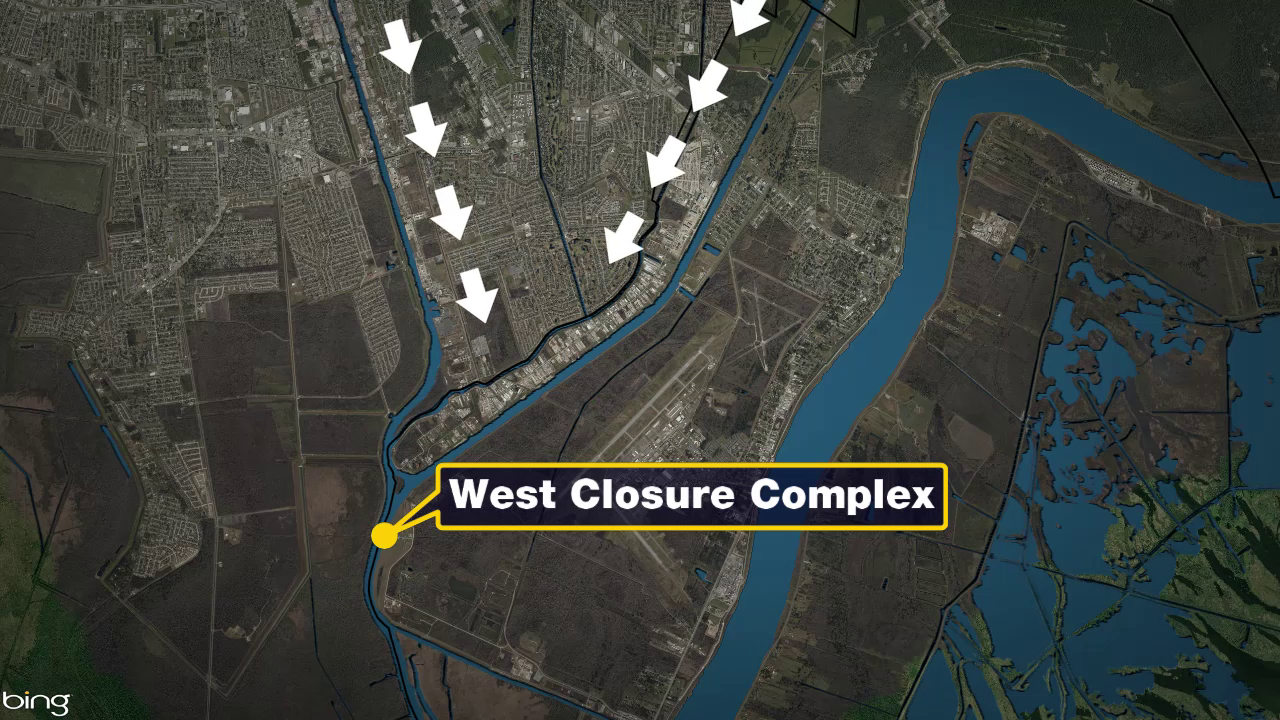NEW ORLEANS — Down a shell road in Plaquemines Parish, just south of the Naval Air Station in Belle Chasse, the West Closure Complex fills the horizon.
It includes the largest pump station in the world and the largest sector gate in the Western Hemisphere.
Its pumps can move 19,000 cubic feet of water per second.
“It will fill up an Olympic swimming pool in three and a half seconds. It will fill the Superdome in about and hour and 45 minutes, floor to ceiling,” says Nicholas Cali, regional director of the Southeast Louisiana Flood Protection Authority-West.
The Southeast Louisiana Flood Protection Authority-West oversees the complex system of flood protection on the west bank of Greater New Orleans.
“We manage 80 miles of levees, floodwalls, and structures. We have 68 gates, three pump stations, three sector gates, and a staff of about 50,” says Cali.
The system includes the Mississippi River levees, the floodwalls along Peters Road in Harvey, the sector gate which closes off the Harvey Canal, and the Bayou Segnette sector gate.
Closing the floodwalls and gates can affect businesses and stop traffic on the waterways. So, the flood authority has to be certain it’s making the right call when it decides to close them. And when the call is made, it has to work fast.
“There are a lot of gates. There are a lot of moving pieces to this system,” explains Cali. “In perfect conditions, we can close the whole system in about 8 hours. My staff is very well-trained. And, given this latest hurricane season, we’ve had plenty of practice.”
The sector gate at the West Closure Complex is the last to close and is the keystone of the system. It stands at the intersection of the Harvey Canal and the Algiers Canal, which drain the west banks of Orleans, Jefferson, and Plaquemines Parishes.
“They take the water out of the neighborhoods and put it into this channel right here, into this basin,” says Cali. “We take that water and we put it out there, so we don’t risk overtopping a floodwall or getting the water so high that a barge might impact a levee or floodwall.”




























